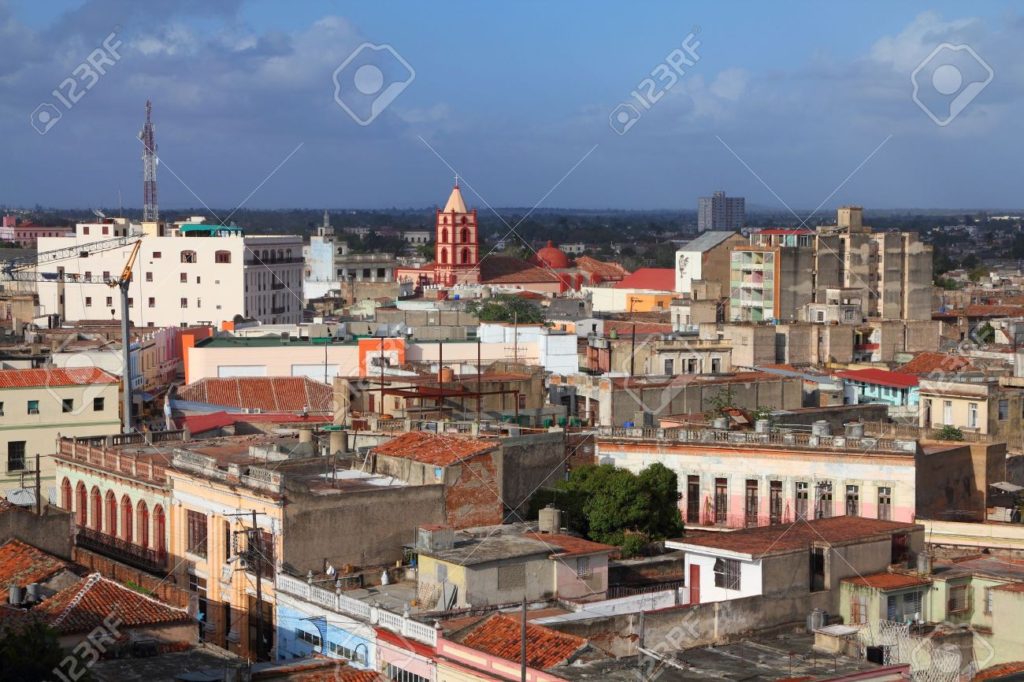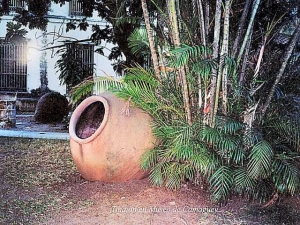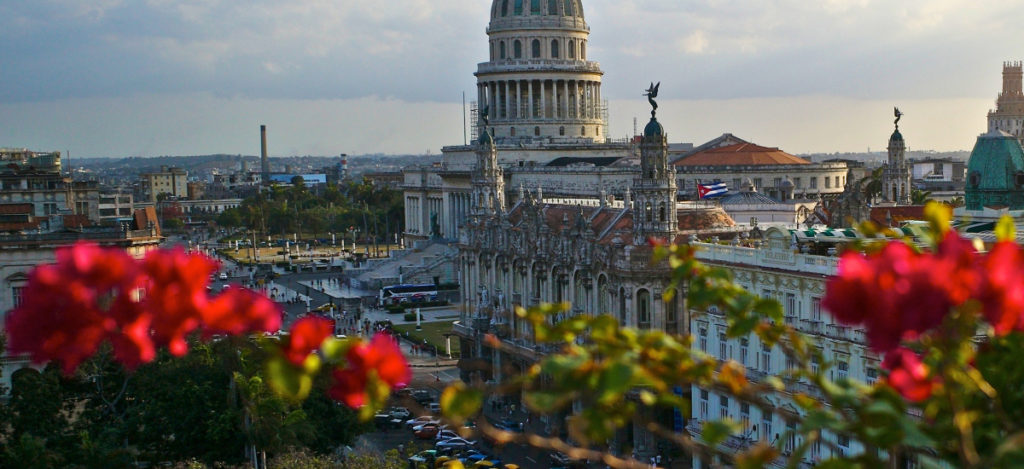Camagüey, Cuba Third most important City.
Camagüey (Spanish pronunciation: [kamaˈɣwej]) is a city and municipality in central Cuba and is the nation’s third largest city with more than 321,000 inhabitants. It is the capital of the Camagüey Province.
Camagüey is the third most important city in Cuba and one of the nine places declared a World Heritage Site on the Island by UNESCO. Founded under the name of Santa María del Puerto Príncipe, it changed its name to honor a cacique of the zone.
After almost continuous attacks from pirates the original city (founded as Santa María del Puerto del Príncipe around 1515 on the northern coast) was moved inland in 1528.
The new city was built with a confusing lay-out of winding alleys. There are many blind alleys and forked streets that lead to squares of different sizes. One explanation is that this was done by design, to make the city easier to defend from any raiders; by the same version, the reason that there is only one exit from the city was that should pirates ever return and succeed in entering the city, it would be possible for local inhabitants to entrap and kill them. However, locals dispute this reasoning as a myth, asserting that in truth the city developed without planning, and that winding streets developed out of everybody wanting to stay close to their local church (the city has 15 of them).
In 2004, the municipality of Camagüey had a population of 324,921. With a total area of 1,106 km2 (427 sq mi), it has a population density of 293.8/km2 (761/sq mi).
Due to its relative geographical isolation, the population of Camagüey has unique traits, such as its Christian devotion and its curious accent when speaking. Land of prolonged droughts but fertile in talents, this village has seen flourish poetry, literature and ballet.
The historic center of Camagüey, is the most extensive in the country and stands out for the excellent conservation of its colonial style buildings. Its curious layout is attributed to a defense plan drawn up by its Spanish founders.
Two elements stand out in the urban configuration of this population: the pavers installed in 1900 and the tinajones. These last are huge containers of mud filled with water that precede the portals of each house and that help to withstand the periods of drought that affect this city.
The clay pots in Camagüey.
The symbol of the city of Camagüey is the clay pot or tinajón, used to capture rain water to be used later, keeping it fresh. Clay pots are everywhere, some as small as a hand, some large enough for two people to stand up in, either as monuments or for real use. Local legend has it that if you drink water from a girl’s personal tinajón, you will fall in love with the girl and never leave her. The main secondary education institutions are the University of Camagüey and the Instituto Pedagógico de Camagüey.
The most outstanding building in the city is the Cathedral, dedicated to Nuestra Senora de la Candelaria, in the old plaza de armas, now renamed with the name of the Cuban hero Ignacio Agramonte. This structure dates back to 1617 and has since been restored several times.
Camagüey is the birthplace of Ignacio Agramonte (1841), an important figure of the Ten Years’ War against Spain in 1868–1878. Agramonte drafted the first Cuban Constitution in 1869, and later, as a Major General, formed the fearsome Camagüey cavalry corps that had the Spaniards on the run. He died in combat on May 11, 1873; his body was burned in the city because the Spanish feared the rebels would attack the city to recover his body. Destacado tambien en Camaguey es la estirpe Varona, cuyo exponente mas conocido fue Bernabe “Bembeta” Varona, luchador incansable por la libertad del entonces yugo espanol y que fue fusilado por estos en la ciudad de Santiago de Cuba.
The outline of Ignacio Agramonte’s horseback statue in the Park that bears his name is a symbol of Camagüey. It was set there in 1911, uncovered by his widow, Amalia Simoni.
The carnival of the city is celebrated on the day of San Juan, when the streets Agramontinas are completely decorated and the locals prepare ajiaco, a typical dish of the area, a kind of stew with local ingredients such as cassava, banana and corn.
Camagüey counts an important railway station on the main Havana-Santiago line with connections to minor lines. The station lies in the central “Avenida Van Horne”, at the corner with “Avenida Finlay”. The city is crossed by the Carretera Central highway and counts a beltway. The A1 motorway, that will link Havana to Guantánamo, and partly built, is in project phase in the city area. The “Ignacio Agramonte International Airport” is located in the north-eastern suburb.
Artists include José Iraola, a contemporary painter who was born in Camagüey, on September 19, 1961, and sculptor Roberto Estopiñán, born in Camagüey, in 1921.
The city is the birthplace of Major League Baseball Hall of Fame member Atanasio Perez Rigal (Tony Pérez), who won two World Series titles with the Cincinnati Reds and was the 1967 All Star Game MVP.
The city is also the birthplace of the Cuban national poet Nicolás Guillén; also of Carlos J. Finlay, an outstanding physician and scientist, who first identified the Aedes aegypti mosquito as the vector of the Yellow Fever.
Camagüey is also the hometown of volleyball player Mireya Luis, Gertrudis Gomez de Avellanada (poet), Silvestre de Balboa (1563–1649, writer), Salvador Cisneros Betancourt, Marqués de Santa Lucia (Cuban patriot, signatory of the Guaimaro Constitution of 1869 and President of the Cuban Republic in Arms).
Father José Olallo Valdés worked there, and was beatified in the city on November 29, 2008.
Olympic champion amateur boxer at 75 kg in Sydney 2000 was Jorge Gutiérrez Espinosa, born 18 September 1975 in Camagüey.
Birthplace of the Cuban writer, Severo Sarduy—a member of the European intellectual community that consolidated in the 1960s behind the journal of critical thought, Tel Quel. Sarduy, censored in Cuba throughout the 20th century, lived in Paris as an exile from 1960 until his death in 1993. He holds the position within literary history of having reformulated the transatlantic reconfigurations of the Hispanic Baroque aesthetic under the term “Neobaroque”.
Agencies/Wiki/Various/Excerpts/Internet Photos/Arnoldo Varona/TheCubanHistory.com
THE CUBAN HISTORY, HOLLYWOOD.
FOLLOW US ON TWITTER AND FACEBOOK. THECUBANHISTORY.COM
CAMAGÜEY, TERCERA CIUDAD MÁS IMPORTANTE DE CUBA.
Camagüey es una ciudad y municipio en el centro de Cuba y es la tercera ciudad más grande del país con más de 321.000 habitantes. Es la capital de la provincia de Camagüey. Camagüey es la tercera ciudad más importante de Cuba y uno de los nueve lugares declarados Patrimonio de la Humanidad por la UNESCO. Fundada bajo el nombre de Santa María del Puerto Príncipe, cambió su nombre en honor a un cacique de la zona. Después de ataques casi continuos de piratas, la ciudad original (fundada como Santa María del Puerto del Príncipe hacia 1515 en la costa norte) fue trasladada hacia el interior en 1528. La nueva ciudad fue construida con una disposición confusa de callejones sinuosos. Hay muchos callejones sin salida y calles bifurcadas que conducen a plazas de diferentes tamaños. Una explicación es que esto fue hecho por diseño, para hacer la ciudad más fácil de defender de cualquier asaltantes; Por la misma versión, la razón de que sólo hay una salida de la ciudad era que si los piratas alguna vez volvieran y consiguieran entrar en la ciudad, sería posible que los habitantes locales los atraparan y los mataran. Sin embargo, los lugareños disputan este razonamiento como un mito, afirmando que en verdad la ciudad se desarrolló sin planificación, y que las calles sinuosas desarrolladas por todos queriendo permanecer cerca de su iglesia local (la ciudad tiene 15). En 2004, el municipio de Camagüey tenía una población de 324.921. Con una superficie total de 1.106 km2, tiene una densidad de población de 293.8 / km2 (761 / sq mi). Debido a su relativo aislamiento geográfico, la población de Camagüey tiene características únicas, como su devoción cristiana y su acento curioso al hablar. Tierra de sequías prolongadas pero fértiles en talentos, este pueblo ha visto florecer poesía, literatura y ballet. El centro histórico de Camagüey, es el más extenso del país y destaca por la excelente conservación de sus edificios de estilo colonial. Su curiosa disposición se atribuye a un plan de defensa elaborado por sus fundadores españoles. Dos elementos destacan en la configuración urbana de esta población: los adoquines instalados en 1900 y los tinajones. Estos últimos son enormes contenedores de barro llenos de agua que preceden a los portales de cada casa y que ayudan a soportar los períodos de sequía que afectan a esta ciudad. Los Tinajones en Camagüey. El símbolo de la ciudad de Camagüey es la olla de arcilla o tinajón, utilizada para capturar agua de lluvia para ser utilizada posteriormente, manteniéndola fresca. Las ollas de barro están por todas partes, algunas tan pequeñas como una mano, algunas lo suficientemente grandes como para que dos personas puedan levantarse, ya sea como monumentos o para uso real. La leyenda local dice que si tomas agua del tinajón personal de una chica, te enamorarás de la chica y nunca la dejarás. Las principales instituciones de educación secundaria son la Universidad de Camagüey y el Instituto Pedagógico de Camagüey. El edificio más destacado de la ciudad es la Catedral, dedicada a Nuestra Señora de la Candelaria, en la antigua plaza de armas, ahora renombrada con el nombre del héroe cubano Ignacio Agramonte. Esta estructura se remonta a 1617 y desde entonces ha sido restaurada varias veces. Camagüey es el lugar de nacimiento de Ignacio Agramonte (1841), figura importante de la Guerra de los Diez Años contra España en 1868-1878. Agramonte redactó la primera Constitución cubana en 1869, y más tarde, como General Mayor, formó el temible cuerpo de caballería de Camagüey que tuvo a los españoles en fuga. Murió en combate el 11 de mayo de 1873; Su cuerpo fue quemado en la ciudad porque los españoles temían que los rebeldes atacaran la ciudad para recuperar su cuerpo. Destacado también en Camagüey es la estirpe Varona, cuyo exponente mas conocido fue Bernabe “Bembeta” Varona, luchador incansable por la libertad del yugo espanol y que fue fusilado por estos en la ciudad de Santiago de Cuba. El contorno de la estatua de caballo de Ignacio Agramonte en el Parque que lleva su nombre es un símbolo de Camagüey. Fue establecido allí en 1911, descubierto por su viuda, Amalia Simoni. El carnaval de la ciudad se celebra el día de San Juan, cuando las calles Agramontinas están completamente decoradas y los lugareños preparan ajiaco, un plato típico de la zona, una especie de estofado con ingredientes locales como la mandioca, el banano y el maíz. Camagüey cuenta con una importante estación ferroviaria en la línea principal de La Habana-Santiago con conexiones a líneas menores. La estación se encuentra en la central “Avenida Van Horne”, en la esquina con “Avenida Finlay”. La ciudad es atravesada por la carretera Carretera Central y cuenta con una circunvalación. La autopista A1, que conectará La Habana con Guantánamo, y parcialmente construida, está en fase de proyecto en el área de la ciudad. El “Aeropuerto Internacional Ignacio Agramonte” está situado en el suburbio noreste. Los artistas son José Iraola, pintor contemporáneo nacido en Camagüey el 19 de septiembre de 1961, y el escultor Roberto Estopiñán, nacido en Camagüey, en 1921. La ciudad es el lugar de nacimiento del miembro del Salón de la Fama de la Liga Mayor de Béisbol, Atanasio Pérez Rigal (Tony Pérez), quien ganó dos títulos de la Serie Mundial con los Rojos de Cincinnati y fue el MVP del Juego All Star de 1967. La ciudad es también el lugar de nacimiento del poeta nacional cubano Nicolás Guillén; También de Carlos J. Finlay, un destacado médico y científico, que identificó por primera vez el mosquito Aedes aegypti como el vector de la fiebre amarilla. Camagüey es también la ciudad natal de la futbolista Mireya Luis, Gertrudis Gómez de Avellanada (poeta), Silvestre de Balboa (1563-1649), Salvador Cisneros Betancourt, Marqués de Santa Lucía (patriota cubano, signatario de la Constitución Guáimaro de 1869 y Presidente de la República Cubana en Armas). El padre José Olallo Valdés trabajó allí y fue beatificado en la ciudad el 29 de noviembre de 2008. Campeón olímpico boxeador aficionado de 75 kg en Sydney 2000 fue Jorge Gutiérrez Espinosa, nacido el 18 de septiembre de 1975 en Camagüey. Lugar de nacimiento del escritor cubano Severo Sarduy -un miembro de la comunidad intelectual europea que se consolidó en la década de 1960 detrás de la revista de pensamiento crítico Tel Quel. Sarduy, censurado en Cuba a lo largo del siglo XX, vivió en París como exiliado desde 1960 hasta su muerte en 1993. Tiene la posición dentro de la historia literaria de haber reformulado las reconfiguraciones transatlánticas de la estética barroca hispana bajo el término Neobaroque. Agencias / Wiki / Varios / Extractos / Fotos de Internet / Arnoldo Varona / TheCubanHistory.com
LA HISTORIA CUBANA, HOLLYWOOD.TheCubanHistory.com Comments



 CAMAGÜEY, Cuba third most important city. * CAMAGÜEY, Tercera ciudad más importante de Cuba.
CAMAGÜEY, Cuba third most important city. * CAMAGÜEY, Tercera ciudad más importante de Cuba.






